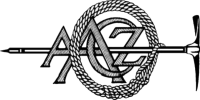- Home
- Nepal
- Adventure Activities
- Peak Climbing
- Mountain Expedition
- Local Tours
- Sirubari Village Homestay
- Ghale Gaun
- Kalinchowk Tour
- Halesi Mahadev - Maratika Cave package
- Chitwan Jungle Safari
- Day tour in Kirtipur
- Day tour in Kathmandu City
- Spiritual Tour to Muktinath
- Chitlang and Kulekhani
- Bardiya National Park
- Jeep Tour to Rara Lake
- Gosaikunda Lake
- Manakamana day Tour with cable-car ride
- 4WD Jeep Tour to Upper Mustang
- Family Holidays
- Heli & Mountain Flights
- Trekking Routes
- Kailash Mansarovar
- Bhutan
- Tibet
- Multi Country
- Domestic Flights
- Contact
- Home
- Nepal
- Adventure Activities
- Peak Climbing
- Mountain Expedition
- Local Tours
- Sirubari Village Homestay
- Ghale Gaun
- Kalinchowk Tour
- Halesi Mahadev - Maratika Cave package
- Chitwan Jungle Safari
- Day tour in Kirtipur
- Day tour in Kathmandu City
- Spiritual Tour to Muktinath
- Chitlang and Kulekhani
- Bardiya National Park
- Jeep Tour to Rara Lake
- Gosaikunda Lake
- Manakamana day Tour with cable-car ride
- 4WD Jeep Tour to Upper Mustang
- Family Holidays
- Heli & Mountain Flights
- Trekking Routes
- Kailash Mansarovar
- Bhutan
- Tibet
- Multi Country
- Domestic Flights
- Contact
Lumba sumba pass
An exciting Trekking experience
Lumba Sumba Pass Trek is the new trekking route located on the eastern part of Nepal. The trail derived its name from the Lumba Sumba peak, which is one of the major attractions of the route.
Along the route of this trekking trail we can trek towards the base camp of Mt. Kanchanjunga(8,586m) and Mt. Makalu(8,201m). Throughout this route we can able to observer the Tamor and Arun River awe-inspiring views,their major tributaries of the enormous Sapta Koshi River.This route encircles alpine grass land, rocky outcrops, dense temperate and sub-tropical forests and low river valleys.Aside from the natural beauty, trekkers can observe the cultural heritage such as monasteries,Chhortens,tempale andprayer walls,add to the flavor,where the festivals of all of these people living in tranquility that makes their native culture energetic.
2 - 18
Detailed Itinerary
- Day 01: Arrival in Kathmandu(1340m)
Arrival in Kathmandu and transer to the respective Hotel in Kathmandu. - Day 02: Kathmandu to Bhadrapur flight/ Taplejung by Jeep (1780m) 7–8hrs driving
Early morning drive to Kathmandu airport then take the domestic flight to Bhadrapur. We drive same day to Taplejung by Jeep through beautiful tea gardens of Jhapa and Illam. - Day 03:Trek Taplejung to Mitlung(910m) 5–6 hrs walking.
The trail passes through beautiful cardamom fields and Alnus trees until Hangdewa village. The trek continues along the banks of Tamor River to Mitlung — a walk of around two hours. - Day 04: Trek Mitlung to Chiruwa(1250m) 5–6 hrs walking.
It is a pleasing walk until Furumbu village. From Furumbu, the trail is uphill for half hour then descends through Ulnus and Schima wallachiana mixed forest to Siwa Bazar (950m) at Linkhim VDC. The trek runs uphill from here until we reach the KCAP Entrance Gate (1300m) at Thiwa Village. From here, the trek gradually descends until Chiruwa — our destination for the day. - Day 05: Trek Chiruwa to Lelep (1690m) 6–7 hrs walking
Today the trek runs along the mighty Tamor River. At the start of the trek, there are two big stones with religious significance. After lunch,it is a pleasing walk for about an hour until Pembu (1485m). From Pembu, it is an uphill climb for about two and half hours to Lelep our destination for the day. - Day 06: Trek Lelep to Ela danda (2150m) 5–6 hrs walking.
After breakfast, the trek runs along the bank of Tamor River through dense forest that offers good habitat for different wildlife species. We cross a suspension bridge after a walk of about an hour from Lelep then it is an uphill climb through pine forest for about half an hour until we reach a monastery. Ela Danda offers panoramic view of snowcapped peaks including the Small Kasturi Peak and Tamor River. - Day 07: Trek Ela Danda to Selep Kharka (2525m) 5–6 hrs walking.
Today the walk is pleasant as it passes through Ulnus and Rhododendron forest for about an hour until we reach a suspension bridge. This place is popular among trekkers as the habitat of red panda. There is a big landslide on the way before we reach Selep Kharka(3210m). - Day 08: Trek Selep Kharka to Olangchung Gola(3210m) 5–6 hrs walking.
Today we trek along the banks of Tamor River leading to a place called Jongim, a flat land surrounded by snow capped hills, after a walk of about 2hrs it takes us to a suspension bridge. We continue the walk as getting higer then we catch the first glimpse of Olangchung Gola from the waterfall. - Day 09: Trek Olangchung Gola to Upper Langmale Kharka (3890m) 6–7 hrs walking.
The trek from today onwards will pass through complete wilderness.The trek passes through pine and rhododendron forests. After a walk of two and half hours,we reach a place called Jadak (3630m) for lunch.Then we walk of other valley towards Lumba Samba three hours on rhododendron and mixed forests take us to our camping site at Upper Langmale. - Day 10: Trek Upper Langmale Kharka to Pass Camp (4750m). 6–7 hrs walking.
The trek can be interesting today as snow leopards have been sighted numerous times from this trek. The trek runs along the small river side lies dense rhododendron forest. - Day 11: Trek Pass camp to Yak Kharka (4590m) 6–7 hrs walking.
Today the trek will pass through the Lumba Sumba Pass (5200m). After a walk of about four and half hour from Pass Camp, we reach the Lumba Sumba Pass which offers panoramic Himalayan views of eastern Nepal including Kanchenjunga, Jannu himal and Makalu ranges.The we descend down to Yak kharka for camping. - Day 12: Trek Yak Kharka to Thudam(3500m) 6 hrs walking.
The trek is downhill from Yakkharka as we arrive to civilization after tiring walk for three days. A walk of about 6 hours takes us to Thudam for village. - Day 13: Trek Thudam to Kharka (2875m) 6–7 hrs walking.
The trail offers panoramic view of peaks in the Makalu range. On the way you see lot of small bushes and bamboo groves — the best habitat for red panda. The walking through many up and downs we reach to Kharka for the camp tonight. - Day 14: Trek Kharka to Chyamthang (2230m) 6–7 hrs walking
The trail goes all downhill for about three hours until we reach Arun River. After crossing the suspension bridge over the Arun, the trek is uphill for about an hour until Chyamthang . - Day 15: Trek Chyamthang to Hatiya(1560m) 6–7 hrs walking.
The trail passes through rhododendron forest from Chyamthang takes us to Gimber Village for lunch. From Gimber, the walk is easy and after a trek of about three hours we reach Hatiya for the night’s stay. - Day 16: Trek Hatiya to Gola (1410m) 5–6 hrs walking.
A walk of around two and half hours after lunch takes us to our camping site at Gola. - Day 17: Trek Gola to Ghadi (1800m) 6–7 hrs walking.
The trail passes through agricultural land and we can find plenty of water sources and small settlements along the way. We reach Gadhi for our destination of the day. - Day 18: Trek Gadhi to Num and drive to Tumlingtar (400m) 3 hrs walking and 4 hrs driving.
From Gadhi, the trek is about an hour downhill till the Arun River. After crossing the river, an uphill climb of about 2 hour takes us to the Num village. As Num is linked with road, we take a jeep to Tumlingtar. - Day 19: Fly back to Kathmandu(1340m) 35 minutes flight.
After breakfast we fly back to Kathmandu then transfer to the hotel. - Day 20: Final departure.
Drive to the International Airport and departure back home.
This trip can be redesigned or redeveloped as per your taste, For more information please e-mail us at This email address is being protected from spambots. You need JavaScript enabled to view it.
Cost and dates
We do small group trek or private trip as your request.
For quick information / contact us at whatsapp/viber + 977 9841815039
Or Drop us inquiry at This email address is being protected from spambots. You need JavaScript enabled to view it.
Tips & Resources
This trek can be redesigned or redeveloped as per your taste, For more information please e-mail us at This email address is being protected from spambots. You need JavaScript enabled to view it..
Frequently Asked Questions
It is always a good idea to involve yourself in doing physical exercises before trekking. Not that you have to be all athletic and muscular to trek. An average level of physical fitness will make the journey less stressful.
Availability of drinking water is not the problem. The problem is the cost of it at higher altitude. As you gain height, the price of water rises up to 2-3$ per liter.An alternative way of getting drinking water is by having your water bottles filled in tea houses. Tea houses will provide you boiled water for about 1$ per liter. They are completely safe for drinking.
Food is not of any concern while trekking. You will get all kinds of cuisines. For breakfast, tea houses will provide you with eggs cooked in your preferred style along with pan cakes, bread butter, roti, and so on.Various other dishes like pizza, pasta, momo, chowmein and many more are also available. The most preferred dish is Dal Bhaat. It is a typical Nepali meal. Rice is served with vegetable curry, lentils, tomato chutney and meat curry.
Trekking is an extreme sport and does come with a lot of risks. Some unavoidable risks are avalanche, heavy rainfall, earthquake, landslide and other such natural calamities.You might fall and injure yourself or catch some viral flue. The deadliest risk of trekking is AMS or Acute Mountain Sickness. This sickness occurs when a great altitude is gained and the body fails to adjust to the changing pressures associated with it. Anyone can fall a victim of the sickness and if not treated in time, it can be fatal.
There is no such hard and fast rule that you must have one. But it is highly advisable to travel with them. Some of the treks cannot be trekked without a guide most of them are the restricted ones.
Visit us
-
JP Marga, Thamel, Kathmandu, Nepal
-
+977-01-5365371
-
+977 98418-15039
(Whats App, Viber & Telegram)








